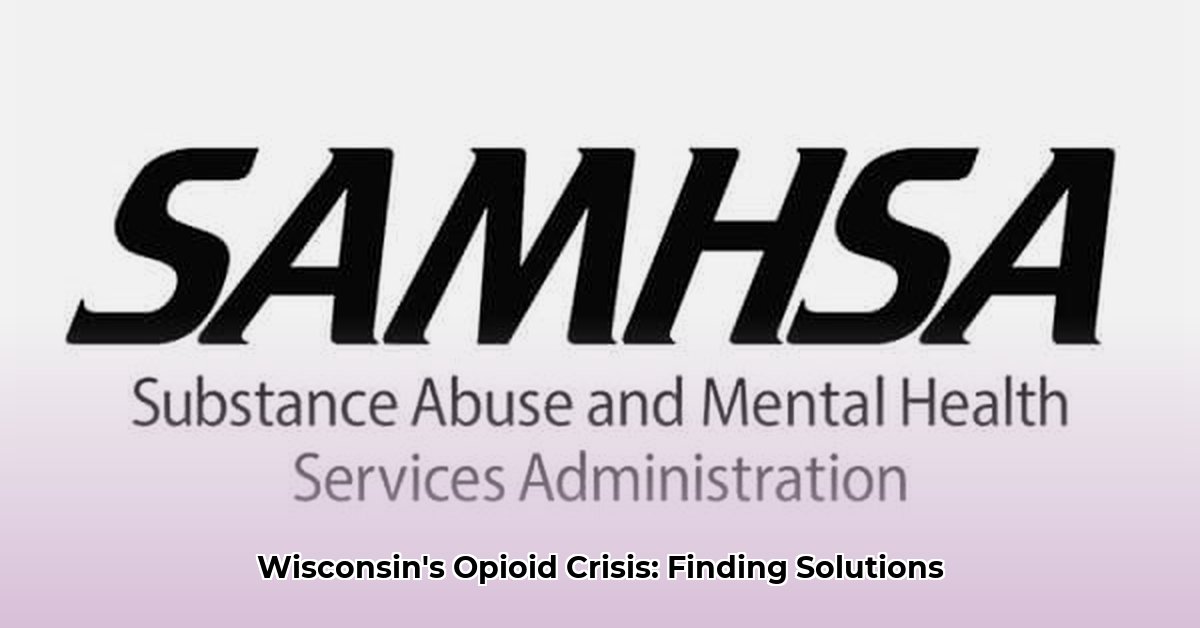
The opioid crisis in La Crosse County, Wisconsin, continues to claim lives, despite recent improvements. While overdose deaths decreased slightly from 29 in 2017 to 25 in the most recent data, this remains an unacceptable toll. Addiction Medical Solutions (AMS) of Wisconsin Onalaska is a key player in the fight against this devastating epidemic, offering Medication-Assisted Treatment (MAT) and working towards community-wide solutions. This article examines the challenges facing La Crosse County, highlights AMS's crucial role, and outlines actionable steps towards a healthier future.
Understanding the Opioid Crisis in La Crosse County
The persistent problem of opioid addiction in La Crosse County underscores the urgent need for comprehensive solutions. Each statistic represents a life lost and families devastated. The decline in overdose deaths, while positive, doesn't diminish the ongoing severity of the crisis. The human cost far outweighs the numbers; it's about broken families, grieving communities, and the lasting societal impacts. This necessitates a multi-faceted approach that goes beyond immediate crisis response.
AMS of Wisconsin Onalaska: A Critical Treatment Provider
AMS of Wisconsin Onalaska offers Medication-Assisted Treatment (MAT), a proven and effective approach to opioid use disorder. MAT combines medication, such as methadone or buprenorphine (drugs that reduce cravings and withdrawal symptoms), with counseling and behavioral therapies. This holistic approach addresses both the physical and psychological aspects of addiction, tailoring treatment to individual needs. AMS's commitment to personalized care is a significant strength in a field that demands individualized attention.
Challenges and Opportunities: Navigating the Path to Recovery
Despite the crucial role of organizations like AMS, significant obstacles hinder widespread access to effective treatment and long-term recovery.
Accessibility: Many individuals face considerable barriers to accessing care, including geographical limitations, lack of transportation, and financial constraints. The urgency of prompt intervention is often overlooked, as delayed treatment exacerbates the challenges of recovery.
Sustainability: The continued operation of vital treatment centers, like AMS, requires sustained and reliable funding. Consistent financial support ensures the delivery of high-quality care and reaches those in need. The risk of funding shortfalls poses a severe threat to treatment availability.
Ethical Considerations in For-Profit Treatment: AMS operates as a for-profit organization, raising questions about balancing financial viability with equitable access to care. This calls for transparency in financial management and a steadfast commitment to ethical practices and patient well-being.
A risk assessment matrix further emphasizes these challenges:
| Risk Factor | Likelihood | Impact | Mitigation Strategy |
|---|---|---|---|
| Inadequate funding | Medium | High | Diversify funding sources; implement cost-effective strategies. |
| Patient retention challenges | Medium | Medium | Develop comprehensive aftercare; offer personalized support; integrate peer support. |
| Regulatory compliance issues | Low | High | Maintain meticulous records; seek legal counsel; stay updated on regulations. |
| Staffing shortages | High | High | Offer competitive compensation; create a positive work environment; invest in training. |
| Negative public perception | Low | Medium | Engage in transparent communication; build community relationships. |
Community Solutions: A Collaborative Approach
Addressing the opioid crisis requires a collective effort. The following actionable steps highlight the importance of community collaboration:
Actionable Steps Towards a Healthier La Crosse County:
Enhance Public Awareness: Educate the community about opioid addiction, its impact, and available resources, including AMS’s services. (Efficacy: Increased help-seeking behavior)
Expand Equitable Access: Ensure all communities have equal access to care, regardless of background or financial status. (Efficacy: Reduced disparities in treatment access)
Strengthen Strategic Partnerships: Foster collaborations between AMS, the La Crosse County Health Department, other agencies, and community organizations. (Efficacy: Enhanced coordination of resources and services)
Utilize Data-Driven Strategies: Collect and analyze data on overdose rates, treatment effectiveness, and community needs to inform resource allocation. (Efficacy: Improved allocation of treatment resources)
Support Long-Term Recovery: Create strong, comprehensive aftercare and support systems for individuals and families throughout recovery and beyond. (Efficacy: Increased recovery rates and reduced relapse)
Conclusion: A Hopeful Future Through Collective Action
The opioid crisis demands sustained, collaborative effort. While challenges remain, organizations like AMS play a vital role, offering a beacon of hope. Through community engagement, strategic partnerships, and robust treatment programs, La Crosse County can create a healthier future for its residents. The path forward requires collective commitment, but a hopeful future is attainable.